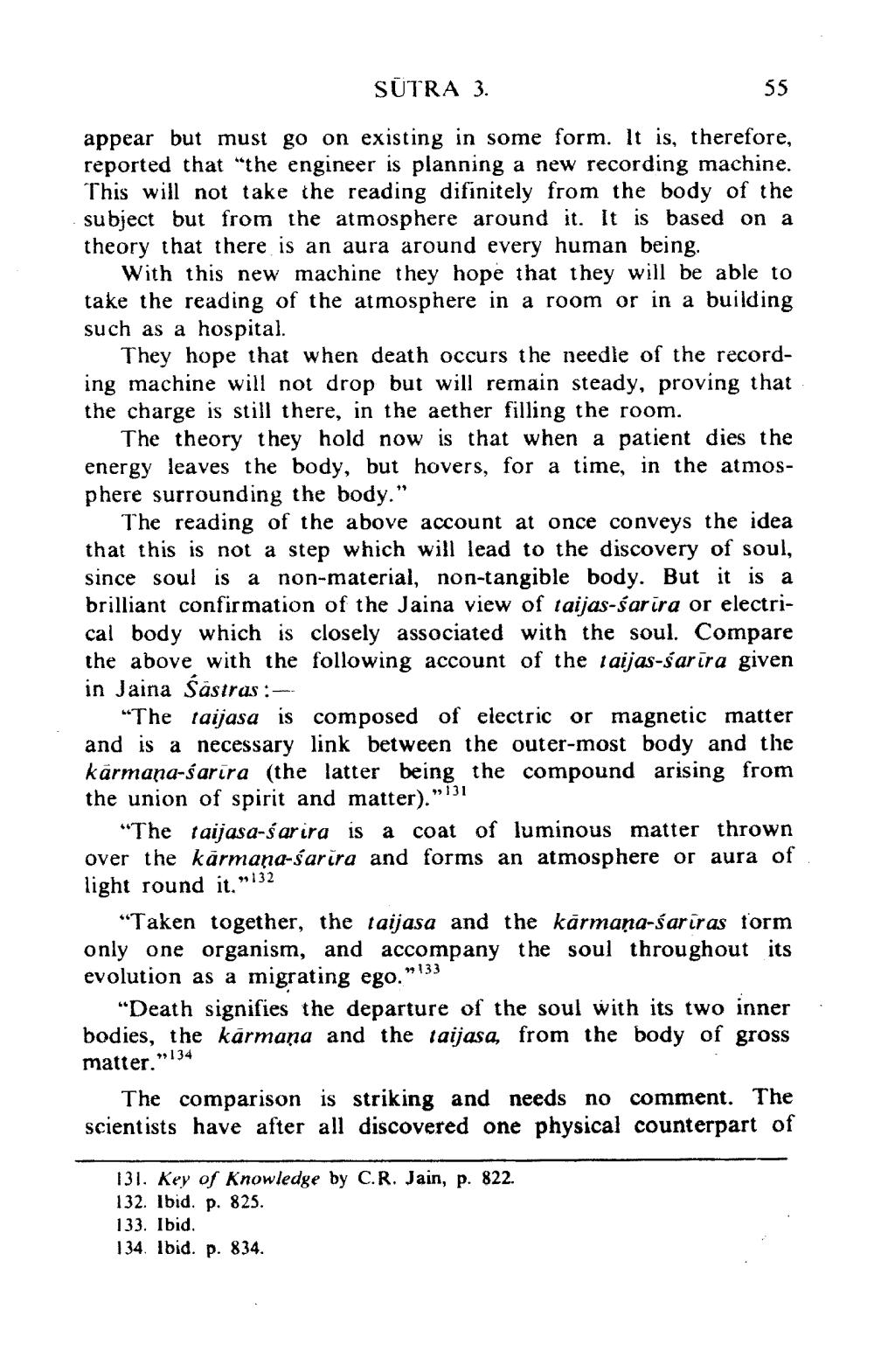________________
SÜTRA 3.
appear but must go on existing in some form. It is, therefore, reported that "the engineer is planning a new recording machine. This will not take the reading difinitely from the body of the subject but from the atmosphere around it. It is based on a theory that there is an aura around every human being.
55
With this new machine they hope that they will be able to take the reading of the atmosphere in a room or in a building such as a hospital.
They hope that when death occurs the needle of the recording machine will not drop but will remain steady, proving that the charge is still there, in the aether filling the room.
The theory they hold now is that when a patient dies the energy leaves the body, but hovers, for a time, in the atmosphere surrounding the body."
The reading of the above account at once conveys the idea that this is not a step which will lead to the discovery of soul, since soul is a non-material, non-tangible body. But it is a brilliant confirmation of the Jaina view of taijas-sarira or electrical body which is closely associated with the soul. Compare the above with the following account of the taijas-sarīra given in Jaina Sastras:
+--
"The taijasa is composed of electric or magnetic matter and is a necessary link between the outer-most body and the karmaṇa-sarira (the latter being the compound arising from the union of spirit and matter)."
131
"The taijasa-sarira is a coat of luminous matter thrown over the kärmaṇa-sarira and forms an atmosphere or aura of light round it."
132
"Taken together, the taijasa and the kärmaṇa-śarīras form only one organism, and accompany the soul throughout its evolution as a migrating ego." 99133
"Death signifies the departure of the soul with its two inner bodies, the karmaṇa and the taijasa, from the body of gross matter.
134
The comparison is striking and needs no comment. The scientists have after all discovered one physical counterpart of
131. Key of Knowledge by C.R. Jain, p. 822.
132. Ibid. p. 825.
133. Ibid.
134. Ibid. p. 834.




